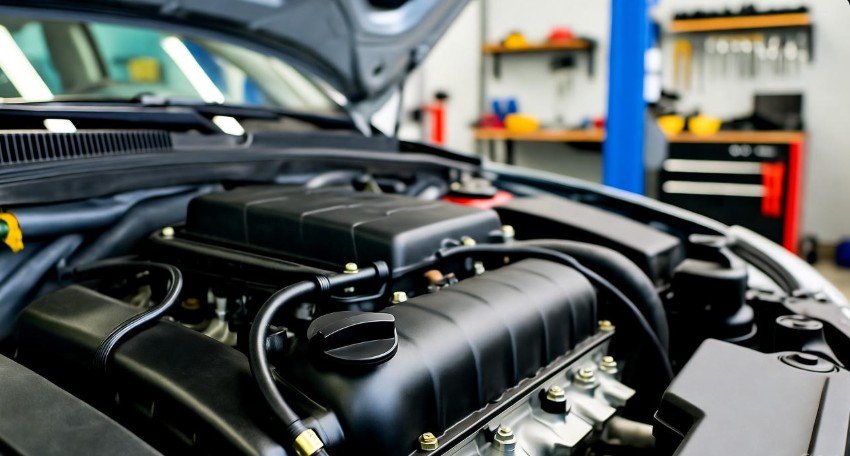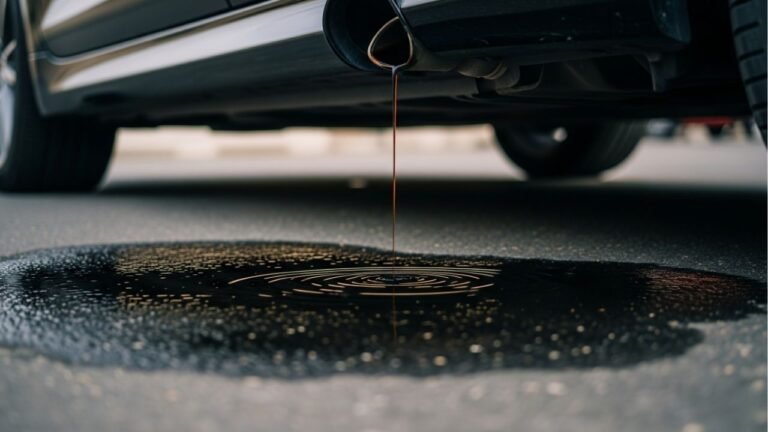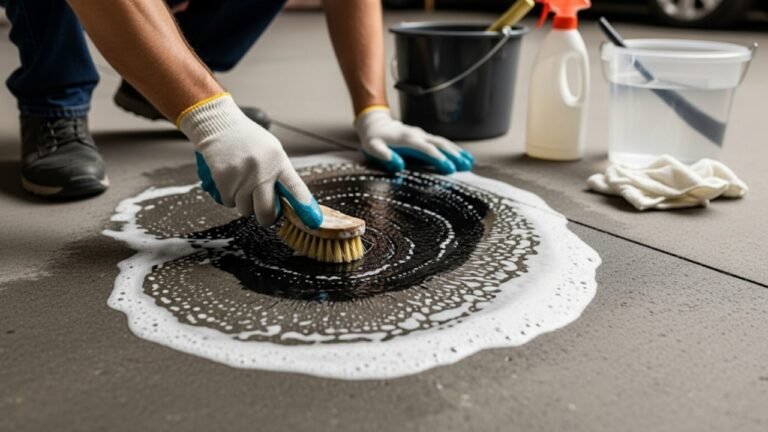Can I Just Add Oil to My Car: The Essential Do’s and Don’ts

Many car owners face a moment when the engine feels louder, the ride feels rough, or the dashboard throws an unexpected oil warning. In that moment, the first thought that comes to mind is simple: can I just add oil to my car and keep driving? It seems easy. It feels harmless. But just like watering a plant with dirty water won’t bring it back to life, topping up old engine oil without changing it doesn’t fix the real issue. Your car’s engine is like a living system where fresh oil works as its lifeblood. When this oil gets old, dirty, or thin, the engine struggles more than you notice. That is why understanding the right way to handle your car’s oil level is essential.
In this guide, I will walk you through the dos and don’ts, share key insights, and explain when topping up oil is fine and when it can lead to bigger problems. Let’s break it down in simple words to help you care for your engine the right way.
Why Understanding Engine Oil Matters
Engine oil does more than people usually think. Fresh oil creates a soft cushion between engine parts. This cushion helps reduce friction, heat, and wear. When the oil starts to break down, the cushion fades away. The engine works harder, runs hotter, and risks long-term damage.
Think of old oil like old cooking oil. When you keep frying food in the same pan without changing the oil, the food quality drops. The smell changes. The taste gets worse. Your engine works the same way. When the oil inside becomes dirty and thin, it cannot protect the engine no matter how much you top it up. This is why regular oil changes are not optional.
Many new car owners get confused about topping up versus changing. But the truth is simple: topping up helps only when the oil level is low, not when the oil is old. If the oil is already dirty, adding more clean oil just mixes fresh water into muddy water—it changes nothing.
The Real Meaning of “Can I Just Add Oil to My Car?”
When people ask “can I just add oil to my car”, what they really want is a shortcut. They want a quick fix so they can avoid a full oil change. While adding oil is sometimes needed, it is not a replacement for proper maintenance.
Adding oil works when the engine is low on oil but the existing oil is still clean. You can check this using the dipstick. Clean oil looks golden or light brown. Thick, black sludge-like oil means it is past its life. If you add fresh oil to bad oil, the engine still suffers.
Car owners often fall into this trap because they think the engine will “feel better” after a top-up. But they forget that the dirt, debris, and metal particles inside the old oil stay in the engine. Over time, this can lead to heavy sludge, poor lubrication, overheating, and even engine failure. So topping up is a temporary bandage, not a cure.
Why Oil Changes Are Essential
An oil change removes the old, worn-out oil and replaces it with fresh, clean oil. This fresh oil flows smoothly through the engine and protects moving parts from friction and overheating.
When the oil is not changed on time, three major issues happen:
-
The oil becomes too thick and dirty
-
The engine loses lubrication
-
Heat builds up and damages engine parts
These issues reduce the lifespan of your car. It also increases your fuel use. Some people think skipping just one oil change is not a big deal. But engines are sensitive. Once the damage starts, fixing it becomes expensive.
Table: Oil Top-Up vs Oil Change
Below is a simple comparison so you can understand the difference clearly.
| Action | Purpose | When It Helps | When It Fails |
|---|---|---|---|
| Add Oil | Increase oil level | When oil is clean but low | When oil is dirty or old |
| Change Oil | Replace old oil | When oil is due for change | Never fails if done correctly |
This table makes one thing clear. Adding oil cannot do the job of a full oil change.
What Happens If You Only Add Oil Without Changing It
Let’s imagine you keep adding oil without changing it. At first, the engine may feel smooth. But deep inside, old oil continues to mix with new oil. Over time, the mixture becomes thicker and darker. Dirt, carbon, and metal dust settle into the engine. This creates engine sludge—a sticky mess that blocks oil flow.
Blocked oil flow means the engine does not get the lubrication it needs. Some parts start rubbing against each other. This friction builds heat. Heat damages engine parts. Sometimes it melts seals or cracks components.
The engine also loses fuel efficiency. You start spending more on gas. The car feels slower and louder. Worst of all, the engine may suffer long-term damage that costs far more than an oil change.
This is why topping up is never enough when the oil is old.
How Often Should You Change Your Car’s Oil?
Oil change timing depends on many things. In the past, cars needed oil changes every 3,000 miles. Today, modern cars and improved oil quality allow longer intervals. Many vehicles now recommend oil changes every 5,000 to 7,000 miles. Some synthetic oils last even longer.
Your driving habits play a major role too. For example:
-
Stop-and-go driving wears oil faster
-
Extreme heat breaks oil down
-
Towing heavy loads makes the engine work harder
If you drive in any of these conditions often, you may need more frequent oil changes. Always check your car’s manual. It tells you the best interval for your engine.
The Right Time to Add Oil
Adding oil is still necessary sometimes. Even if the oil is new, the engine can still burn a little oil, especially in older cars. You can add oil when the dipstick shows the level is below the recommended mark.
But remember this rule:
Add oil only when the oil is clean but low.
Do not add oil if the oil is dark, thick, or smells burnt. In that case, a full oil change is needed.
The Do’s and Don’ts of Adding Oil
Here are key things you must follow when topping up engine oil.
Do’s
-
Check the oil level often.
-
Use the right oil grade mentioned in your car manual.
-
Add oil slowly to avoid overfilling.
-
Keep a small oil bottle in your car for emergencies.
Don’ts
-
Do not add oil to old, dirty engine oil.
-
Do not mix oil types unless necessary.
-
Do not ignore the oil warning light.
-
Do not rely on top-ups as a replacement for oil changes.
These points might look simple, but they protect your engine more than you think.
How to Change Your Car’s Oil the Right Way
Some people prefer doing their own oil change at home. If you enjoy small DIY tasks, changing oil is easy and satisfying. You just need patience, the right tools, and a good space to work.
The steps are simple:
-
Park the car on a flat surface.
-
Let the engine cool.
-
Remove the drain plug and let the oil drain.
-
Replace the plug.
-
Remove the old oil filter.
-
Install the new filter.
-
Add fresh oil slowly.
-
Check the dipstick to confirm the level.
This process ensures all the old oil leaves the engine and only clean oil stays inside. It’s cheap, effective, and keeps your engine healthy.
Signs You Need to Check or Add Oil
Sometimes, your car tells you it’s time for attention, even before the dipstick shows it. Paying attention to these signs can prevent bigger problems:
-
Dashboard Oil Warning Light: The most obvious signal. Don’t ignore it.
-
Unusual Engine Noise: Ticking or knocking sounds may indicate low lubrication.
-
Excessive Exhaust Smoke: Blue smoke can mean burning oil.
-
Reduced Fuel Efficiency: Friction from low oil makes the engine work harder.
Listening to your car is like listening to a friend. Ignoring subtle warnings leads to bigger, more expensive problems. Regular checks and quick action keep the engine happy.
Can Oil Additives Replace Oil Changes?
You might have seen commercials promising that oil additives “clean” your engine or “restore” old oil. While some additives temporarily improve viscosity or reduce engine deposits, they are not a replacement for changing oil. Additives cannot remove sludge completely, nor can they restore degraded lubrication fully. Think of it like using a band-aid on a deep cut. It might prevent immediate bleeding but doesn’t heal the underlying wound. Using additives occasionally is fine, but relying on them instead of oil changes is risky.
Top-Up Tips for Everyday Car Owners
Adding oil the right way is easier than it seems, and it can save you stress if done properly:
-
Always park on level ground. A tilted surface can give inaccurate dipstick readings.
-
Use a funnel to prevent spills. Wiping spilled oil is not just messy—it can damage engine parts over time.
-
Avoid overfilling. Too much oil creates pressure in the engine, which can damage seals and gaskets.
-
Keep a small bottle of the right oil in the trunk for emergencies. You never know when a long road trip might need a quick top-up.
Even if you are not a car enthusiast, these simple habits make a huge difference in engine longevity.
Common Misconceptions About Adding Oil
Many myths float around about topping up oil, and it’s time to set the record straight:
-
“Adding oil improves engine performance instantly.”
Truth: Proper oil level ensures smooth operation but does not boost horsepower. Performance depends on overall engine health. -
“If the oil is low, just add more regularly—no need to change.”
Truth: Regular top-ups cannot remove dirt, metal shavings, or sludge. Oil change is the only way to maintain engine health. -
“All oils are the same; any oil will do.”
Truth: Using the wrong grade of oil can reduce protection and increase wear. Always use the grade recommended in your car manual.
Breaking these misconceptions early keeps your car running smoothly and avoids expensive repairs.
Personal Insights: Why I Never Skip Oil Changes
Over the years, I’ve learned the hard way how dangerous it is to rely only on topping up oil. I once ignored a slow oil leak in an older vehicle. Each week, I added oil without changing it. For months, everything seemed fine. Then, one morning, the engine began making a loud knocking noise. The repair cost more than the car was worth. That experience taught me a crucial lesson: topping up is just a temporary fix. Regular oil changes are insurance for your engine. It’s not just a recommendation—it’s a necessity.
Balancing Convenience and Engine Health
Many drivers are busy and tempted to skip maintenance. However, modern cars are engineered to run for thousands of miles with the right care. Here’s how to strike a balance:
-
Schedule oil changes at a trusted shop or DIY at home if confident.
-
Check oil levels monthly; add oil only when necessary.
-
Avoid shortcuts like relying solely on oil additives.
-
Follow your vehicle manufacturer’s recommendations for oil type and change interval.
Treat your engine like a friend you want to last years with you. A small investment in care today prevents costly repairs tomorrow.
FAQs: Can I Just Add Oil to My Car
1. Can I add oil to my car without changing it?
Yes, you can top up if the oil level is low and the oil is still clean. However, this is only a temporary solution, not a substitute for a full oil change.
2. Is it okay to top up oil frequently?
It’s fine if your car burns a little oil or leaks, but check the underlying cause. Frequent top-ups with old oil are not healthy for the engine.
3. How do I know if my engine oil is dirty?
Check the dipstick: clean oil is golden or light brown; dirty oil is dark and thick. A burnt smell is another indicator.
4. Will adding oil improve car performance?
Proper oil level ensures smooth running, but adding oil alone doesn’t increase horsepower or acceleration.
5. Can I mix different types of oil when topping up?
It’s best to avoid mixing oil types. Stick to the grade and type recommended in your car manual.
6. How often should I check my car’s oil?
At least once a month and before long trips. Checking regularly prevents emergencies and prolongs engine life.
7. What happens if I overfill oil?
Too much oil creates pressure inside the engine, which can damage seals, gaskets, and lead to leaks or engine failure.
8. Are oil additives a substitute for an oil change?
No. Additives can temporarily improve oil performance but cannot remove sludge or restore degraded oil.
Conclusion
Topping up oil may seem simple, but it’s just one part of proper engine maintenance. Adding oil without changing it is like giving your car a sip of water when it needs a full bath. Fresh, clean oil ensures smooth operation, reduces wear, and keeps your engine cool under pressure. Understanding when to add oil, when to change it, and how to avoid common pitfalls will save you time, money, and headaches. Regular maintenance isn’t just about extending the life of your car—it’s about peace of mind and safe, reliable driving.
Next time you see that oil light, don’t panic. Check the level, consider the condition, and decide: top-up for now, but schedule an oil change soon. Your engine will thank you for it.





